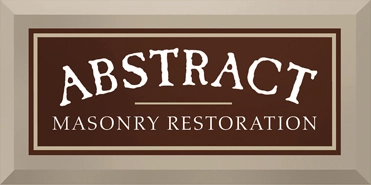We’re all familiar with the childhood game to avoid cracks in the cement or we’ll break mama’s back. As we get older, however, and wake up to the historical nature of our town’s buildings and yards, it’s not the threat of inadvertent spinal trauma to our guardians that has us scrambling to repair cracks in the foundation. Instead, restoring historic masonry is largely in service of two overarching goals:
- To respect the legacy of our predecessors and the spirit they brought to our city or state through work that they accomplished with their own hands.
- To prevent further decline that may result in collapse or other costly damages.
To this end, the team at Abstract Masonry has become expert at bringing back the luster of yesteryear to all kinds of buildings, made from all kinds of materials. Arguably the most versatile of these materials is concrete, making it a frequent point of concern for us each year.
Always Historical
Like mud bricks, concrete goes back almost as far into the historical record as any other building material on earth. As soon as the first civilizations learned of the significance of lime quarrying, sand, water, and stone began to get mixed with the mined substance to create a substance that would harden as it dried; concrete, in a form much as we know it today, was invented.
Some civilizations, like those in the Roman Empire, even improved on the mixture by adding in volcanic ash to make a harder, more durable material. This is why structures like the Colosseum look nearly as good today as when they were first built.
Since that time, the use of concrete to build imposing, eternal buildings has been passed down through generations and in every country in the world. A tour of the world would show concrete being used in everything from religious structures, transportation, and military. Some of the most famous concrete structures include:
- The Pantheon, Rome
- The Hoover Dam, Nevada
- The Pentagon, Virginia
- The Panama Canal, Panama
- The Erie Canal, New York
Despite the longevity of the material, concrete building restoration as a discipline developed only a few centuries later. Ancient Egyptian, Turkish, and Greek builders practiced rebuilding efforts on their most famous concrete structures and that tradition continues today in the restoration work of Salt Lake City.
Concrete Restoration with Abstract Masonry
Today, we do all sorts of updating and restoring of historic concrete buildings around Utah, in conjunction with Preservation Utah. As strong as concrete is, it is still susceptible to weathering. Some of the most common masonry problems we tackle are:
- Crumbling and erosion
- Frozen water damage
- Damage from external blunt force
- Earthquake damage
- Biological growth damage
Our process of restoration involves strict documentation, structure support while replacement concrete settles, and matching the new work to the old as seamlessly as possible. We will determine if the original concrete has faults that could lead to further damage and what type of reinforcement is necessary.
After the building has been successfully strengthened, we will also undertake any ornamental work that needs to be done to match the existing design. If you are interested in how we can help restore your concrete home or office building, or any other historic masonry you own, call us for a quote today.
